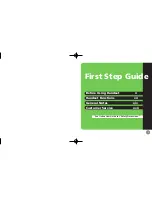
6.4.3 Reset :- ILBRST / UVLO2
The MiniMoe generates a reset pulse (active low) to the NELL (#L4 -ILBRST) when
it detects that the battery voltage is below the UVLO2 threshold of (2.85V- 3.1V).
The device also disables internal regulators R2, R3, R5, R6, and R7, this then
holds the ILB in reset mode, allowing only the real time clock to run. When the
battery is recharged or replaced the ILB reset pulse is reversed and the
regulator’s re-activated.
There is another under volt lock off point (UVLO1) which is activated when the
battery voltage reaches the range of between (2.6V-2.85V). This then disables
regulator 1 (ILB/RTC regulator) and via the output pin (BUB-#12) drives the
external FET TR25, which switches ILB/RTC supply over to the back-up battery
BATT1.
6.4.4 Power Control
The ILB section of NELL performs the power control management of the HHP. It is
this power control management that enables the HHP to execute its power saving
functions. The ILB runs the 32kHz clock and controls the transition of the HHP
between various power modes.
The ILB controls the power mode(s) of the HHP via two signals:
1. +RG3VPWR
This connects to MiniMoe (IC19) #21 (EN3). A high on this pin switches
regulator 3 (+3VSC) on thus powering IC27and the SRAM (IC9).
A low switches it off.
2. HARD_PWR
This connects to MiniMoe #28 (EN2). A high on this pin switches regulator
2 (+3VNELL) on thus powering the NELL (IC8), the flash ROM (IC15), and the
EEPROM (IC10). A low switches it off and powers down NELL etc.
3. SIMPWR (NELL#L5)
This output from NELL connects to MiniMoe (IC19) #20. A logic high switches
The output SIMVCC (#1) to on, and supplies power to the SIM connector(#6).
4. SIMVSEL (SIM Voltage Select) (NELL#L3)
This output from NELL connects to MiniMoe #18. A logic high on this pin
selects the SIMVCC supply voltage to either 3v or 5v.
5. +5VRFON
This output from NELL connects to MiniMoe #19. A logic high on this pin
switches the 5VRF on and is then fed to the RF board.
Summary of Contents for DB2000
Page 1: ...DB2000 Service Manual Help ...
Page 3: ... ...
Page 5: ... 2 3 4 2 2 2 2 2 0 0 0 5 3 4 2 6 2 7 2 2 2 2 0 8 9 2 2 2 2 2 2 2 2 ...
Page 7: ... 2 6 2 2 2 2 2 3 4 2 2 0 2 ...
Page 8: ... 2 ...
Page 9: ... Previous Section Next Section Main Menu Section 2 Unit Specifications ...
Page 77: ... 1 2 ...
Page 83: ...Fit Antenna INSERT AND SCREW THE ANTENNA INTO THE ASSEMBLY ...
Page 107: ...Fig 3 7 GSM_LNA Pg 3 3I TP419 Fig 3 8 PCN_LNA Pg 3 3J TP420 Fig 4 9 TCXO Pg 2 H11 TP413 ...
Page 109: ...Fig 4 3 PCN_TX Pg 1 1J TP417 Fig 4 4 3V_G_TX Pg 1 4I TP100 Fig 4 5 3V_P_TX Pg 1 4J TP101 ...
Page 110: ...Fig 4 6 GSM_ON Pg 1 2K TP402 Fig 4 7 PCN_ON Pg 1 1K TP415 Fig 4 8 PRE_ON Pg 1 4J TP416 ...
Page 112: ... I Q ...
Page 113: ...Fig 4 14 V_ERROR PCN Pwr Lvl 7Pg 1 16I Fig 4 15 300khz Charge Pump Pg 1 Log 9G ...
Page 115: ... Previous Section Next Section Main Menu Section 6 Device Device Information Information ...
Page 172: ......
Page 173: ......
Page 174: ......
Page 175: ......
Page 176: ......
Page 177: ......
Page 178: ......
Page 179: ......
Page 180: ......
Page 181: ......
Page 182: ......
Page 183: ......
Page 184: ......
Page 185: ......
Page 186: ......
Page 187: ......
Page 188: ......
Page 189: ......
Page 190: ... Previous Section Next Section Main Menu Glossary of Terms ...
















































